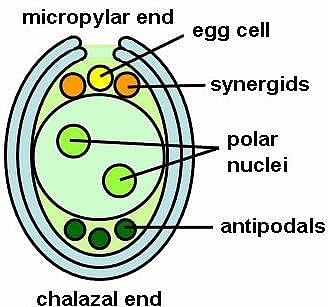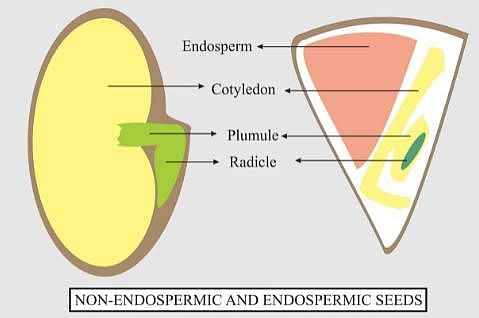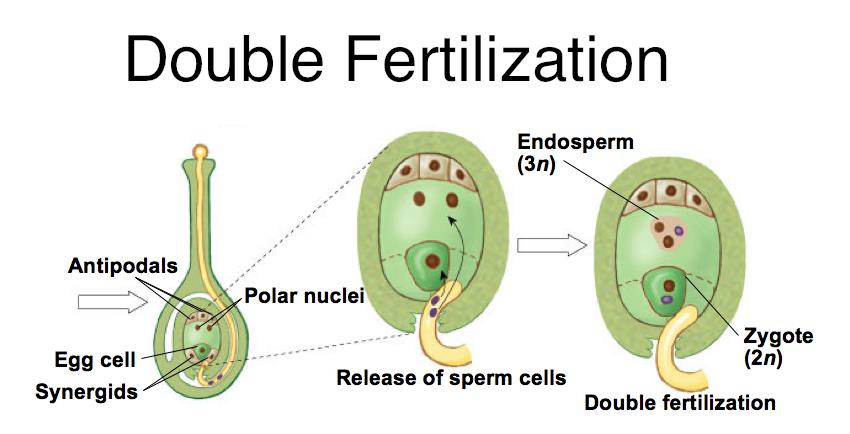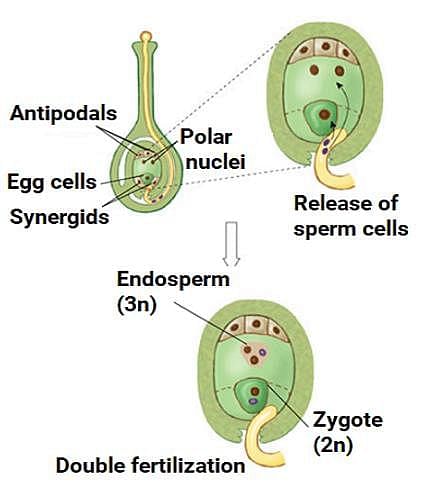Test: Double Fertilisation - NEET MCQ
10 Questions MCQ Test Biology Class 12 - Test: Double Fertilisation
Assertion : In the most common type of endosperm development, the PEN undergoes successive nuclear division to give rise to free nuclei.
Reason : Embryo develops at the chalazal end of the embryo sac where zygote is situated.
Reason : Embryo develops at the chalazal end of the embryo sac where zygote is situated.
In _______, female gametophytes stop their growth at 8 nucleate stages.
| 1 Crore+ students have signed up on EduRev. Have you? Download the App |
-Identify the correct ststements with respect to the following diagram
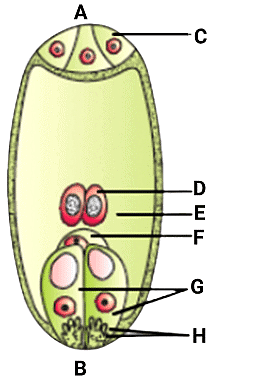
Statement I: It represents mature embryosac or the female gametophyte in an angiosperm.
Statement II :A is the micropylar end and B is the Chalazal end
Statement III :C guides the entry of the pollen tube into the embryo sac
Statement IV: D is the polar nuclei and E is the central cell.
Statement V: F is the egg cell.Statement VI:G is the antipodals and H is special cellular thickenings.

Fusion of a male gamete with an egg in the embryo sac is called______.
What is the central cell called after triple fusion in double fertilisation?
The diagram shows a fertilised embryo sac where

Statement I:A is diploid and B is triploid
Statement II:C are degenerating antipodal cells and D are degenerating synergids
Endosperm is consumed by a developing embryo in the seed of ______.
|
86 videos|294 docs|184 tests
|


